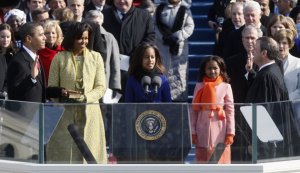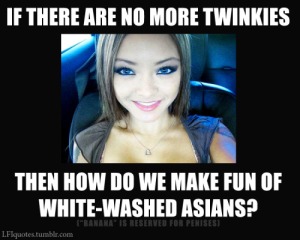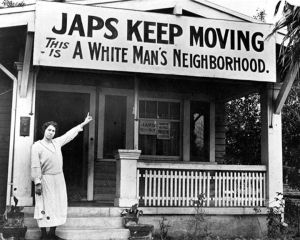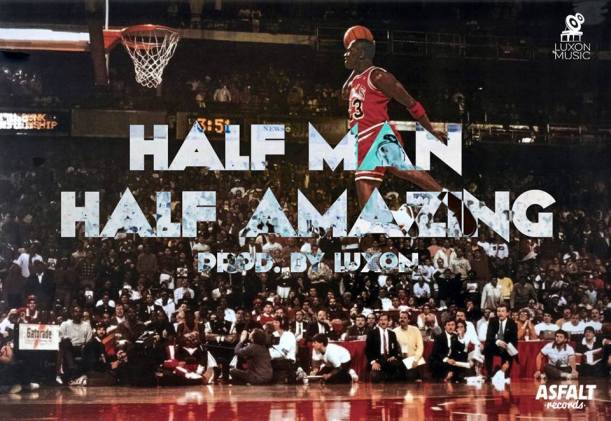\”Nas is like the Afrocentric Asian, half man…half amazing!\” ~ lyrics by Nas, It Ain\’t Hard to Tell
In 2000, for the first time in history, the United States Census Bureau offered respondents the option of identifying themselves with more than one race / ethnicity. People of mixed-race heritage selected from the following list: White (or Caucasian), Black or (African American), Asian, Native American, or Alaska Native, Native Hawaiian, other Pacific Islander, or Some other race.
This growing multiracial identity movement in the U.S. reflects a desire by people to claim their full identities, and there is considerable evidence many Americans today are multiracial without knowing it. In 2010, the number of Americans who checked both ‘black’ and ‘white’ on their census forms was 134 percent higher than it had been a decade earlier.
Many people claim the election of President Barack Obama proves racism / white supremacy is long gone. When Senator BarackObama was sworn in on January 20, 2009, he and his wife, Michelle, and two daughters, Malia and Sasha, were a novelty to say the least. While it’s debatable whether he’s the first “Black President,” or if he even qualifies as being “Black,” no one ever questioned Michelle’s blackness.
“Just the fact that he has a ‘real black woman’ next to him makes him special to me.”
It seems many blacks agree with these sentiments, expressed by one woman in her twenties. And this is natural considering that prior to the Obama Administration, the only visible role-models for black youth have been primarily entertainers and athletes. So, just seeing Barack and his wife in the oval office has been the difference between night and day for many.
However, is the president black? Or is he mixed?
Zaza Ali, who just released Black Matters, a book which assesses black people’s lives in America, was called the “half white chick” due to her biracial background by a detractor. Her reply was simple: “I’m a black woman.” Well, like her, I’ve pretty much always considered myself a black man despite having a Japanese mother. However, to get to the crux of the matter, I recently joined some Asian-mixed-heritage social media sites on Facebook, and was surprised to find the overwhelming acceptance of terms like “haafu,” “hafu,” “hapa,” and even “gaijin.” These labels have traditionally been considered pejoratives but, nowadays, many so called mixed-race people embrace them. If these words are meant to be negative, why would the victims turn around and feel pride in using them? Is this the same as blacks’ (and others) fascination with the infamous “N-word?” Given the extreme examples in the media showing victims siding with their open enemies, such as the black woman who “loves the confederate flag,” can we just write all this off as a sort of Stockholm Syndrome?
Something else which caught my attention in these groups was how many of the Asian-mixed-Caucasians segregated themselves from Asians mixed with anything not considered white; this includes mixes of two Asian cultures. After noticing this on more than one site, I searched Facebook to see if any exclusively White/Asian closed groups existed. I didn’t find any. I wonder why?
Is this just another residual of the same old white supremacy?
 Are Asians-mixed-with Caucasian regarded as white? And if so, do they enjoy the same privileges as Europeans? Yumi Nakata, in her article entitled “Growing up as a Hafu in Japan” states: “Typical Eurasian Hafu children are admired for their ‘exotic’ Eurasian look, while Hafu Asians like myself are looked down upon.”
Are Asians-mixed-with Caucasian regarded as white? And if so, do they enjoy the same privileges as Europeans? Yumi Nakata, in her article entitled “Growing up as a Hafu in Japan” states: “Typical Eurasian Hafu children are admired for their ‘exotic’ Eurasian look, while Hafu Asians like myself are looked down upon.”
Maya Inamura, another “Hafu” mixed with Caucasian, wrote a stirring article about the current Miss Japan (who happens to be a Black Japanese woman). It is entitled “Ariana Miyamoto: Colorism and Anti-Black Racism in Japan.” In it, she states that “All mixed people face discrimination…there is no singular hafu experience.” But she also says: “Being visibly part white can confer privilege…” and Japanese-mixed-with-white are “overrepresented” in the Japanese Entertainment Industry. She sums her analysis up by saying that her own (Japanese) grandmother thinks she (Maya) should be famous solely upon the grounds that she is Japanese mixed with white.
Conversations about racism cut deeply for a host of different reasons, so it is understandable that many do not wish to participate in them. I normally avoid directly inserting my opinion in articles, but due to the personal context of this writing, I had to make an exception here. From my experience, any critical discussion on racism is a very, very mature topic. It is not suited for everyone. For those who are afraid to participate, to express yourself, or to just open yourself up and think about what racism actually is, I agree that you should remain silent (and stay out of the way).  This is an adult conversation at the ‘adult table.’ Perhaps you would be more comfortable at the children’s table. There, you can discuss cartoons, sports, video games, and the latest gossip. But for those of us who take being an adult seriously, meaning that we understand we dictate what happens on this planet, this discussion is not an option. No disrespect intended but this needs to be stated.
This is an adult conversation at the ‘adult table.’ Perhaps you would be more comfortable at the children’s table. There, you can discuss cartoons, sports, video games, and the latest gossip. But for those of us who take being an adult seriously, meaning that we understand we dictate what happens on this planet, this discussion is not an option. No disrespect intended but this needs to be stated.
Dr. Francis Cress Welsing, a behavioral psychiatrist based in the Washington D.C. area teaches the system of white supremacy victimizes ALL “non-white people” (she specifically states “black, brown, red and yellow”) but it is mainly directed at the darkest folks. So it seems this would also include “mixed people.” This theory, taught to her by Dr. Neely Fuller more than three decades ago, is the only one I’ve heard that seeks to address racism in its entirety. May I also add she’s been challenging experts for years to pose a better theory. She claims if someone can, she’ll change hers. And I likewise pose the same challenge. Especially to those Asians, or Asians-mixed with Caucasian (or Latinos) who see themselves as white.
And I can’t forget all the patriotic blacks as well.
“Many people are seeking to find a comfortable place inside the system of racism/white supremacy.” ~ Professor Griff, Public Enemy
And this is understandable, maybe even logical. Let’s face it: who wants to be homeless living under a bridge, locked-up in prison, or even just ostracized from family and friends due to having views which are considered “controversial.”
In closing, I’d like to include my Asian brothers. Many darker-skinned people might scoff at the notion that Asians too, are the victims of bigotry. And this may be because many Asians try hard…real hard to gain even minimal acceptance into the white society.  Matthew Salesses, in his article “How the Rules of Racism are Different for Asian Americans,” covers this issue in one quote. “I have been called “chink” and “flat face” and “monkey” many many times.” He makes some good points throughout the article but, for me, the statement that best expresses his opinion is: “…why aren’t white people happy enough with EVERYTHING?”
Matthew Salesses, in his article “How the Rules of Racism are Different for Asian Americans,” covers this issue in one quote. “I have been called “chink” and “flat face” and “monkey” many many times.” He makes some good points throughout the article but, for me, the statement that best expresses his opinion is: “…why aren’t white people happy enough with EVERYTHING?”
When it’s all said and done, can we lump Asians and Blacks into one group with all the mixed-races and label it “the victims of white supremacy?” I think it’s safe to say many would disagree. Some would be horrified at the mere suggestion. Sometimes the most difficult thing to do is to see ourselves objectively. Perhaps, instead of concentrating on what you consider yourself, or other races to be, it’s more useful to ponder how the dominant culture views you. How can this be done? Simply by considering the established rule of thumb when it comes to race: the “one-drop” rule. Does it apply to mixed-races? Here is what one blogger had to say: “I don’t remember it referring to any ethnic group other than blacks. But ask yourself this: if this were during WW2 and you were mixed with Japanese and white, do you think you would have escaped being hauled off to the internment camps? Or at best, living in fear of it?”

Stay tuned for the next AfroA Perspective...peace!
“Never trust anyone who says they do not see color. This means, to them, you are invisible.” ~Nayyirah Waheed

